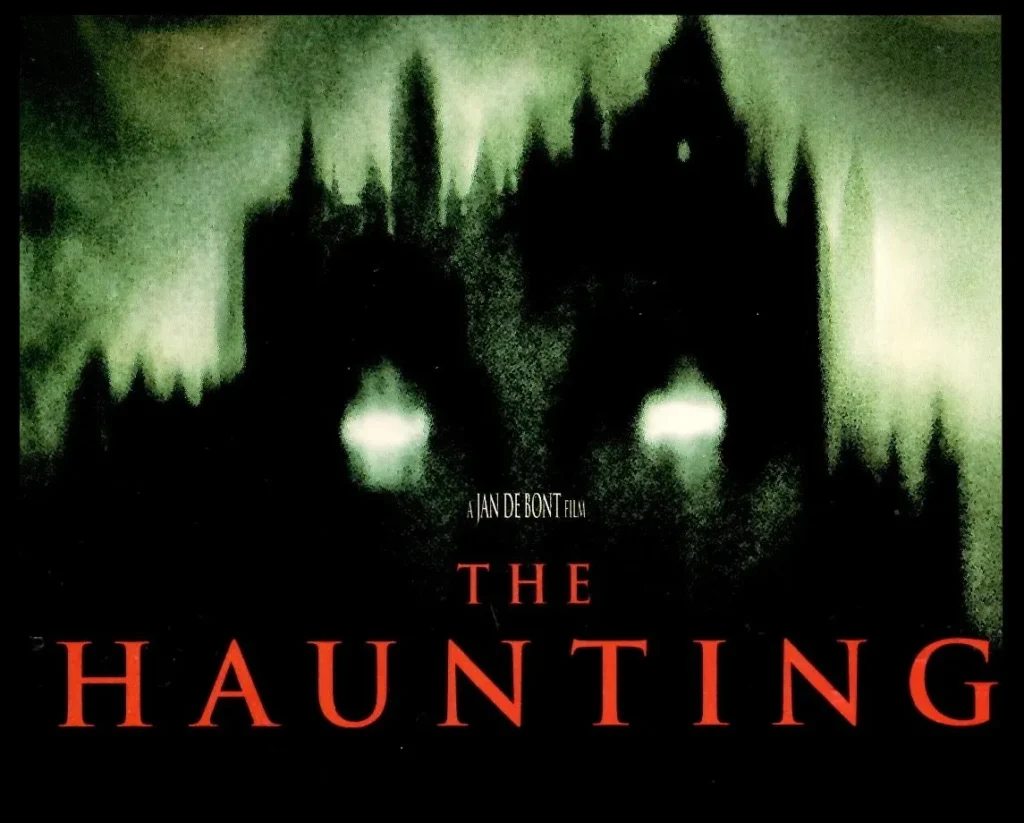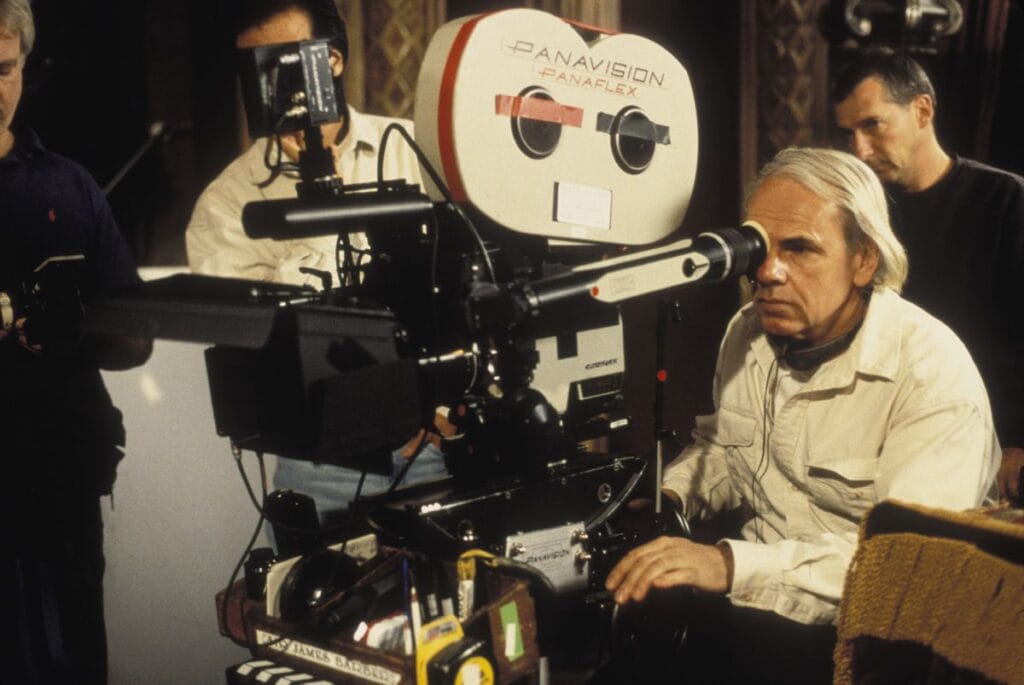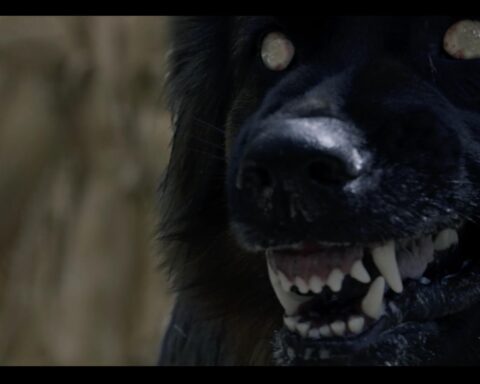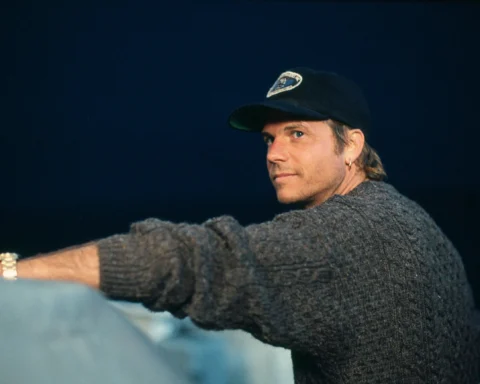Released in 1999 and directed by Jan de Bont, The Haunting is a psychological horror thriller that has garnered attention for its chilling narrative and notable performances. The film takes its inspiration from Shirley Jackson’s acclaimed 1959 novel, The Haunting of Hill House, a cornerstone of the horror genre known for its unsettling atmosphere and deep psychological themes.
The Haunting brings together a star-studded cast, featuring Lili Taylor, Liam Neeson, Catherine Zeta-Jones, and Owen Wilson. Each actor delivers a compelling performance, with Lili Taylor’s portrayal of Eleanor standing out for its emotional depth and vulnerability. The ensemble cast adds a layer of complexity and intrigue, capturing the audience’s attention not only through the supernatural elements but also through intense character interactions.
The storyline revolves around Hill House, a mansion with a dark history and a reputation for being haunted. Dr. David Marrow, portrayed by Liam Neeson, invites a group of individuals to the mansion under the guise of a sleep study, secretly aiming to investigate the paranormal activities reported there. As the narrative unfolds, the characters confront their darkest fears, and the house’s sinister nature emerges, leading to a gripping exploration of psychological terror.
What sets The Haunting apart in the horror genre is its emphasis on atmosphere and psychological tension rather than overt gore. The film explores themes of fear, isolation, and the human psyche, making it a compelling watch for those who appreciate a more cerebral approach to horror. The haunting visuals and the eerie score further elevate the suspense, immersing viewers in an unsettling experience. As we delve deeper into the movie, we will explore these elements in greater detail, providing a comprehensive analysis of why The Haunting remains a significant work in the realm of psychological horror.

Plot Summary and Key Themes
In “The Haunting,” the narrative pivots around Eleanor ‘Nell’ Vance, portrayed by Lili Taylor, whose life takes a dramatic turn when she participates in a seemingly innocent sleep study. Set against the enigmatic backdrop of Hill House, the film masterfully intertwines elements of psychological horror and supernatural phenomena to explore deeper themes of fear, isolation, and trauma.
Nell, a woman grappling with past traumas and feelings of seclusion, is drawn to Hill House under the pretext of participating in a scientific sleep study. However, beneath the surface of this innocuous experiment lies a darker, more sinister agenda. As Nell navigates the eerie and labyrinthine corridors of Hill House, she encounters inexplicable events that challenge her grip on reality. The house itself emerges as a pivotal character, its foreboding presence amplifying the underlying tensions and mysterious occurrences.
Key themes of the film resonate strongly throughout the unfolding narrative. Fear is omnipresent, not just from the ominous environment but also from the characters’ inner battles. Isolation manifests in Nell’s personal journey, reflecting both her physical separation from reality and her emotional detachment from society. The psychological trauma experienced by each character, especially Nell, adds to the depth of the story, providing insight into their intricate psyches. The supernatural elements are interwoven seamlessly, providing a tangible form to the characters’ deepest fears and unresolved conflicts.
Without delving into spoilers, it is important to note significant plot points, such as the initial calm that quickly devolves into a series of enigmatic and terrifying experiences. The study, seemingly led by benevolent intentions, reveals a much darker purpose as Hill House’s true nature comes to the fore. As Nell and her fellow participants face the inexplicable horrors of the mansion, their perspectives and sanity are put to the ultimate test, culminating in a crescendo of psychological and supernatural terror.




Performance Analysis: Lili Taylor and Supporting Cast
Lili Taylor’s portrayal of Eleanor, often referred to as “Nell,” stands as a cornerstone of ‘The Haunting.’ Taylor’s ability to imbue Nell with both fragility and unexpected fortitude creates a character that is profoundly compelling. Her nuanced performance captures the bewildering terror that engulfs Nell, inviting the audience to traverse the chilling corridors of Hill House through her eyes. Taylor masterfully balances vulnerability with resilience, making Nell a character capable of evoking empathy and tension, as she grapples with the malevolent forces haunting her.
Notably, Taylor’s expressiveness brings a remarkable depth to Nell’s psyche, rendered through subtle shifts in her demeanor, facial expressions, and vocal inflections. She makes audiences not just witness Nell’s fear but almost feel it, ensuring a strong emotional connection. Taylor’s capability to oscillate between moments of quiet desperation and stirring bravery effectively anchors the film, enhancing the larger horror narrative.
Complementing Taylor’s stellar performance is Liam Neeson, who takes on the role of Dr. David Marrow. Neeson’s authoritative presence provides a critical counterbalance to Taylor’s fragile Nell. As Dr. Marrow, Neeson infuses a sense of credibility and gravitas into the film. His portrayal of a doctor torn between scientific curiosity and moral obligation adds a layer of complexity to the storyline, further elevating the suspense.
Catherine Zeta-Jones as Theo brings a bold, confident energy to ‘The Haunting.’ Her performance injects a layer of sophistication and allure, contrasting sharply with Nell’s innocence. Zeta-Jones’ Theo acts as both a confidant and a provocative foil to Nell, enriching the interpersonal dynamics among the characters and heightening the film’s psychological tension.
Owen Wilson, portraying Luke Sanderson, shifts the atmosphere with his easygoing charm, providing intermittent relief from the film’s relentless tension. However, Wilson doesn’t stray from the darker tones necessary for the role, ensuring that Luke’s joviality also carries an undercurrent of unease. His performance offers a multi-faceted character who navigates the supernatural turmoil with a blend of skepticism and humor.
Together, the ensemble cast delivers a cohesive and gripping performance that amplifies the haunting atmosphere of the film. Each actor’s distinct approach to their character contributes significantly to the narrative, creating an intricate web of interactions and emotions that sustain the film’s eerie ambiance.

Visual and Sound Design: Crafting the Horror Experience with Jan De Bont
‘The Haunting,’ starring Lili Taylor, excels in its visual and sound design to deliver an impactful horror experience. The atmospheric setting of Hill House, with its intricate and ominous interiors, creates an unsettling environment that serves as the perfect backdrop for the film’s supernatural occurrences. The architecture of the house, filled with dark corridors, eerie rooms, and gothic elements, contributes significantly to the ambiance, reinforcing the theme of creeping dread that pervades the story.
The use of special effects in ‘The Haunting’ is instrumental in bringing the haunting to life. Subtle visual effects, such as moving shadows and inexplicable disturbances, are woven seamlessly into the film, enhancing the sense of an ever-present supernatural force. These effects are not overly reliant on CGI, which adds a layer of authenticity to the horror, making the inexplicable phenomena within Hill House feel more tangible and real.
Cinematography plays a crucial role in building tension and scares throughout the movie. The film employs a variety of camera techniques, such as tight framing and slow zooms, to create a sense of claustrophobia and unease. Additionally, the strategic use of lighting and shadow further amplifies the ominous atmosphere, ensuring that the audience remains on edge.
The sound design and music score are equally effective in heightening the horror elements. Subtle, almost imperceptible sounds—creaking floors, whispers, and distant groans—build an atmosphere of anticipation and fear. The music score, with its haunting melodies and sudden crescendos, punctuates the more intense moments, guiding the viewers’ emotional responses and sustaining the suspense.
Overall, the film’s technical achievements in visual and sound design are aligned with its narrative, amplifying the psychological horror and enhancing the viewer’s overall experience. The meticulous craftsmanship in these areas ensures that ‘The Haunting’ leaves a lasting impression as a memorable and spine-chilling horror film.









